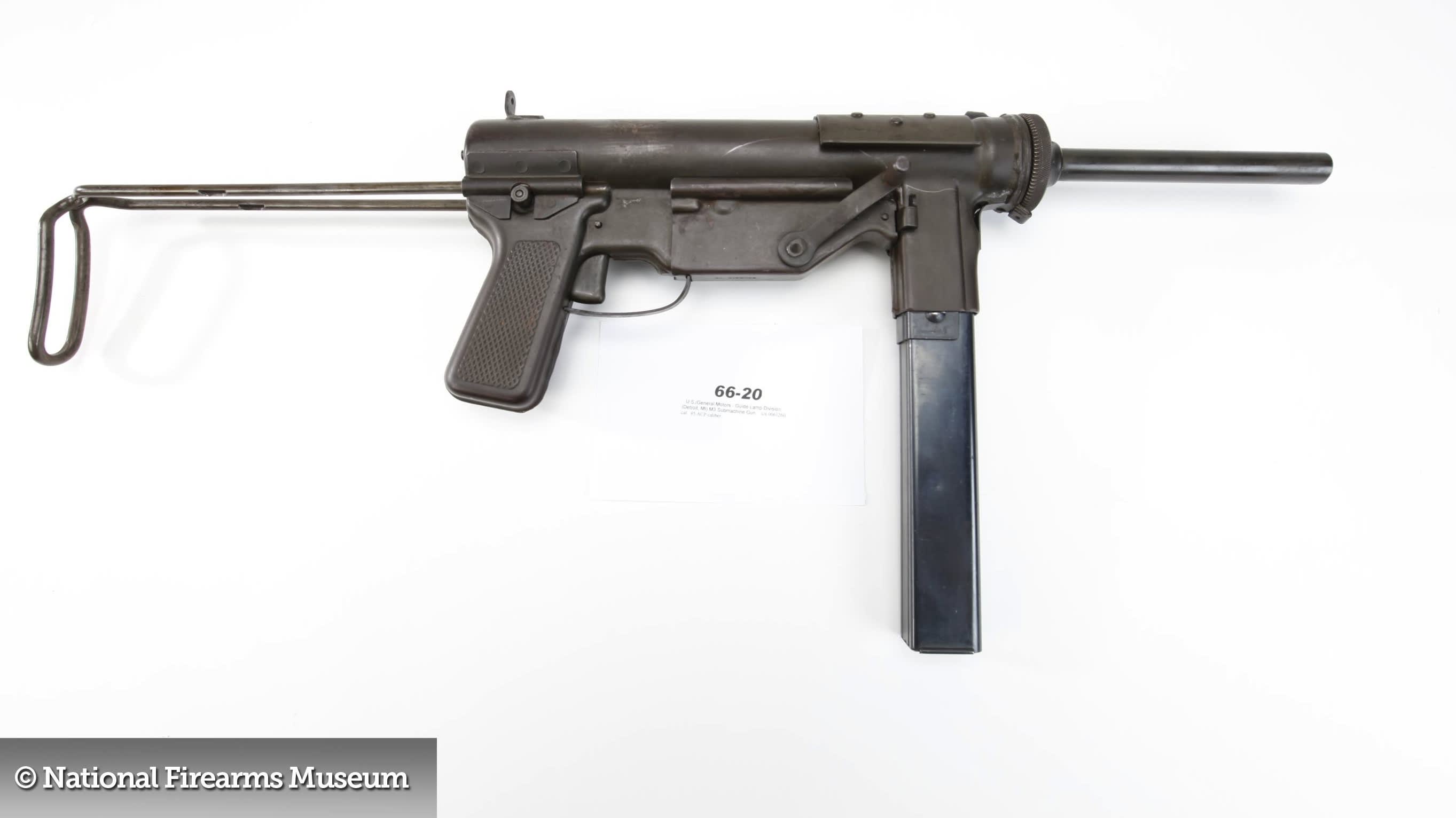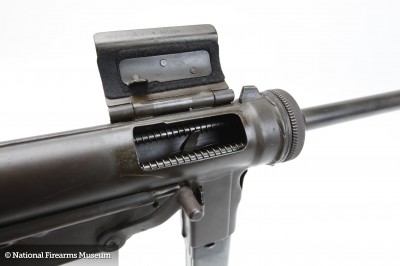The Automatic, Systematic, Hydromatic M3 Grease Gun
Tom McHale 10.08.13

This week, rather than talk about “This Goofy Gun,” we’re going to change things up a little and take a look at “This Greasy Gun.”
Most folks think that the M3 “Grease Gun” of World War II fame was created in response to the success of the German MP 38, MP 40 and British Sten submachine guns. While partly true, that’s not the whole story. Here’s the rest of the storied, and musical, history of the M3 Grease Gun.
Many people know that the M3 was produced by General Motors’ Guide Lamp Division. What they don’t know is that the design was envisioned much, much earlier, or so I hear. By 1940, GM was getting a little worried about competitive pressure from AMC’s Gremlin impacting sales of their Cadillac LaSalle. That Gremlin was a beast of a car wasn’t it? Anyway, to add some kick to the planned 1941 model, GM hired long-lost brother of the infamous Edward Hyde of Dr. Jekyll fame, George Hyde, to design some killa’ glovebox accessories for ’41 model sales incentives. Having the same family wild hair as crazy man Mr. Hyde, George took to designing prototypes of the M3. “Heck, I just wanted to amp up the ‘Boom!’ factor for our customers. Most companies were putting a flashlight mount in the glovebox, but I figured a .45 ACP submachine gun would be way more spiffy,” commented GM Engineer George Hyde.
Alas, GM discontinued the Cadillac LaSalle in 1941 and the M3 Glovebox Submachine Gun was never marketed. But the story did not end there. In 1941, the Ordnance Department asked the Army to submit requirements for a new submachine gun. In addition to specification of .45 ACP caliber, inexpensive stamped-metal construction and superior automatic fire control, the new gun must have a really catchy theme song.
Seeing an opportunity to resurrect Hyde’s previous project, and do a little contract work with a very young John Travolta, GM’s Guide Lamp Division started stamping out prototypes of the M2 and finally M3. As for the theme song? That was Travolta’s job. And now you know the real story behind that catchy jingle from the movie Grease—“You’re the One That I Want.” Not having been born yet, Olivia Newton John was not available for promotional campaigns. Besides, those skin-tight pants were way too risqué for pre-war America.
Okay, maybe that’s a bit of an exaggeration.

In any case, the M3 was a successful example of wartime efficiency and creativity. The mostly stamped-metal construction (stamped barrels didn’t work out too well) allowed for low per-unit costs. General Motors was able to price the M3 at just one Jackson—just a few bucks more than a Blu-Ray DVD of Grease 2. This was a pretty big deal as the Thompson submachine guns cost approximately $225 each to construct. That’s a lot of “Greased Lightning” for each Thompson, right?
One drawback to the M3’s stamped construction was its appearance. I’m a big fan of the M3, and even I have to admit that gun is butt-ugly. Fortunately, GM management was able to placate a very insecure production team by arranging for crooner and teen heart throb Frankie Avalon to sing a live, and rousing, rendition of “Beauty School Dropout” at a monthly motivational meeting. If Avalon had not had that three-day break between Beach Blanket Bingo movies, the outcome of the war may have been entirely different. Makes you think, doesn’t it?
As far as features go, the M3 is truly elegant in its simplicity. Firing from an open bolt, with a fixed firing pin, it was not too many steps ahead of a classic zip gun. One big difference from the zip gun was the 30-round stick magazine, costing about three dollars each at the time. The stock was of wire (heavy, of course) construction and was mostly retractable, making the M3 useful for mobile troops like those insanely macho guys that jumped out of planes.
Like early 1911 pistols, the gun’s clearances were somewhat loose in order to keep the gun functioning with expected battlefield dirt and grime. A cocking lever was on the right side of the original M3. This was later removed in the M3A1 model and replaced with a simple hole that allowed the bolt to be cocked with an inserted finger. Talk about simplicity! The trigger? It has one mode: go. However, the cyclic rate is limited to about 450 rounds of .45 ACP per minute. This helped make the gun’s recoil more manageable, as one of the design goals was for a soldier to place 90 percent of shots on a six-foot-by-six-foot target at a range of 50 yards.
Oh, and the name, Grease Gun? Nah, it didn’t have anything to do with the resemblance to an automotive lubrication accessory, Travolta named it. How do you think he got all that Brylcreem in his hair for the movie? That’s right. Grease Gun.

